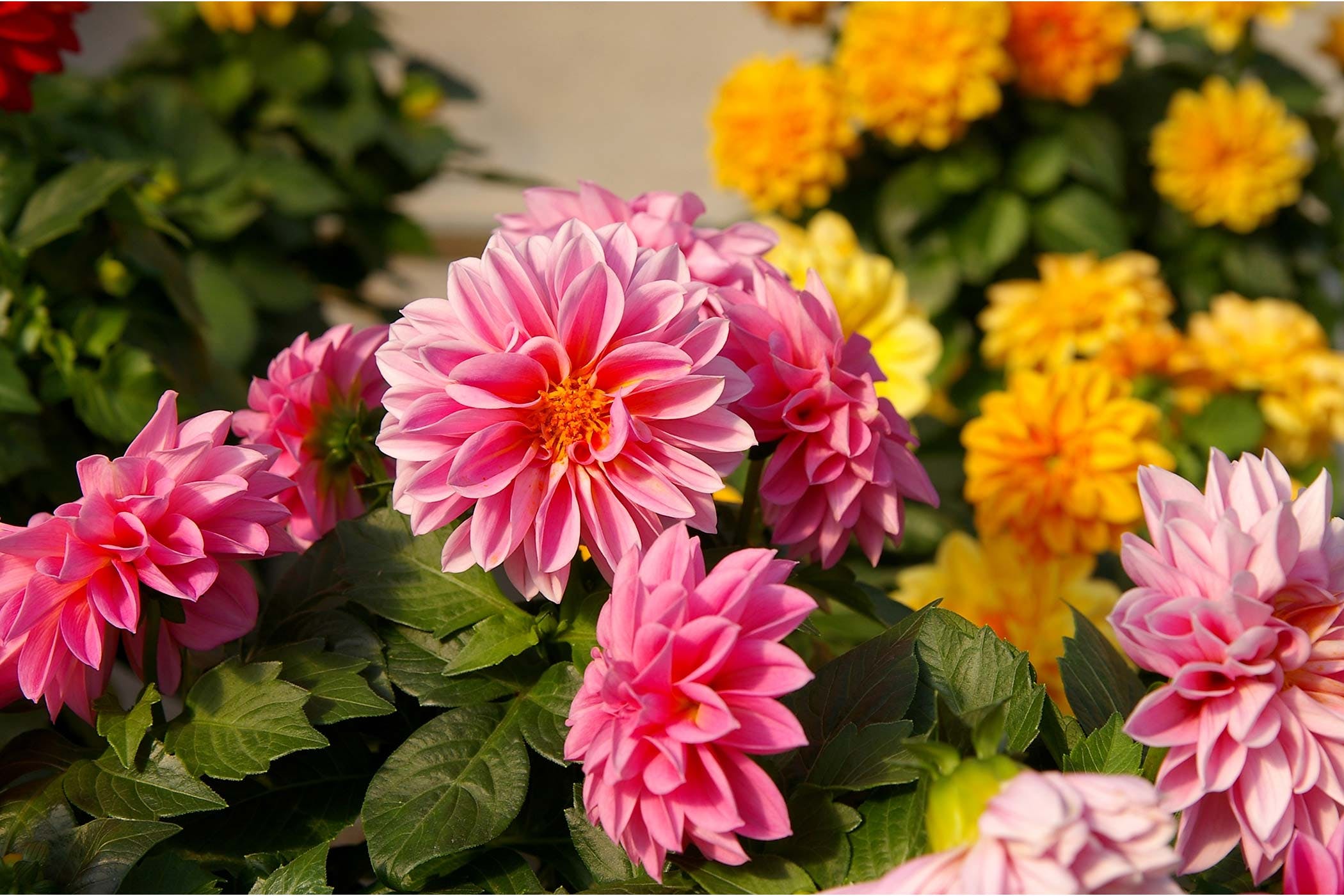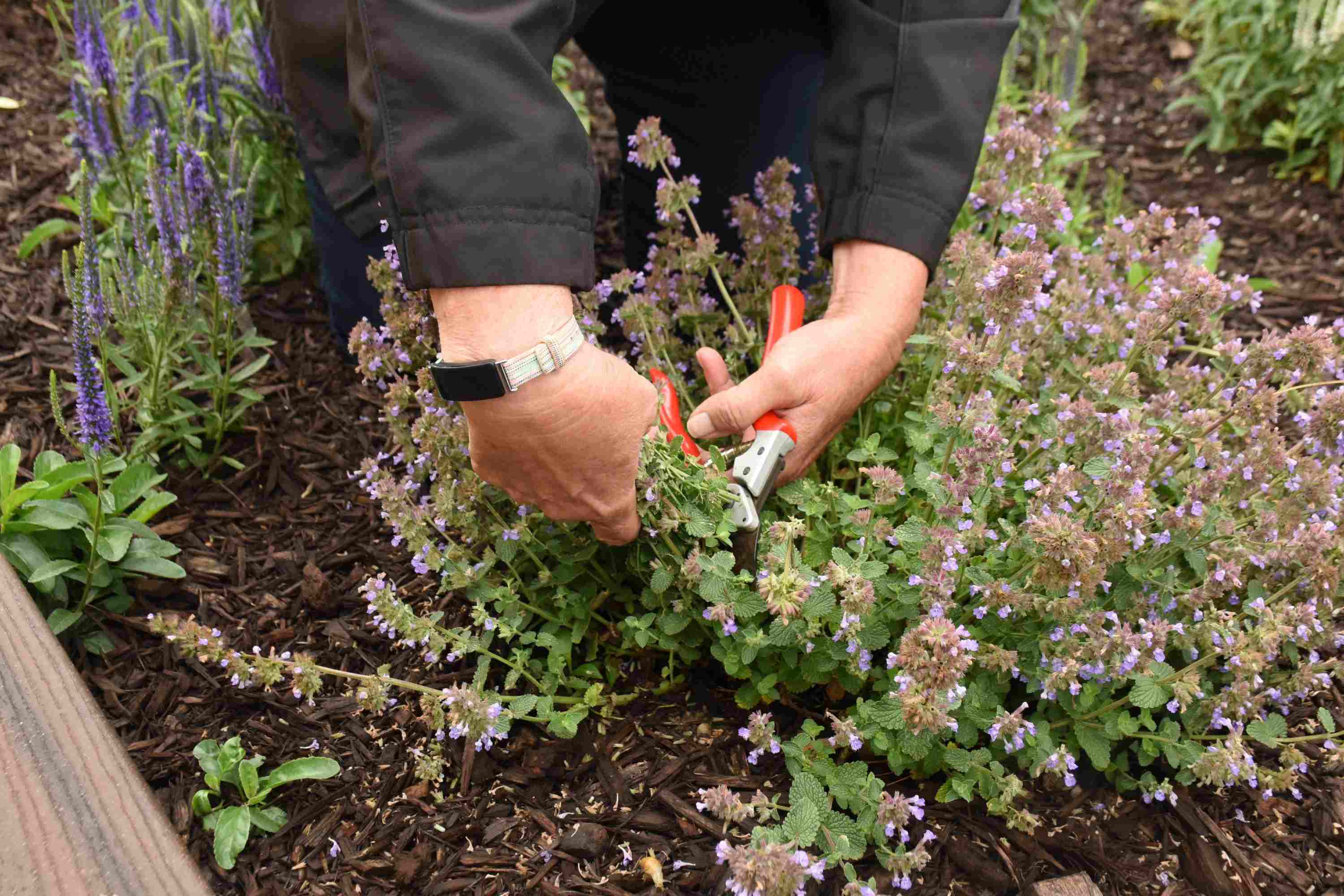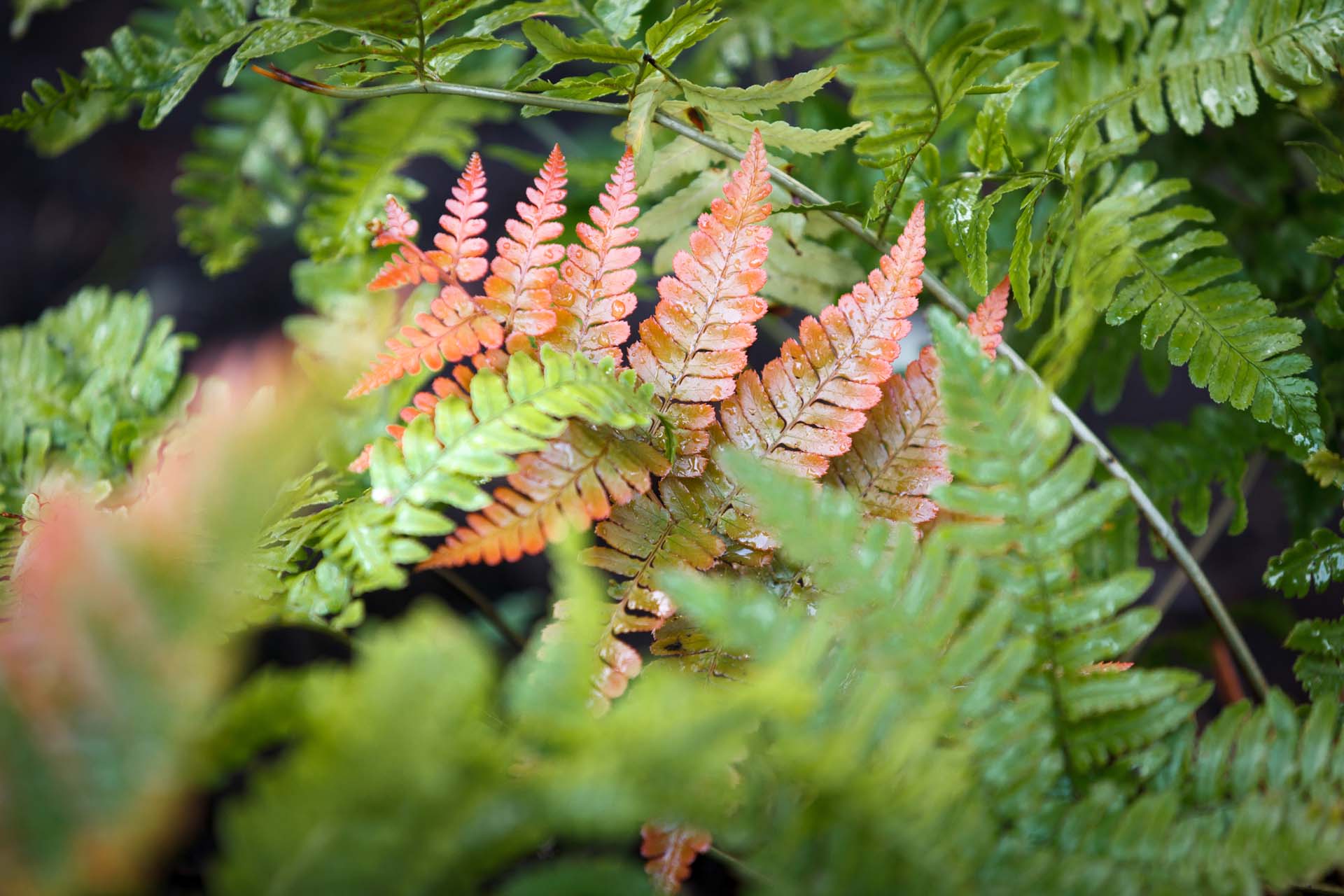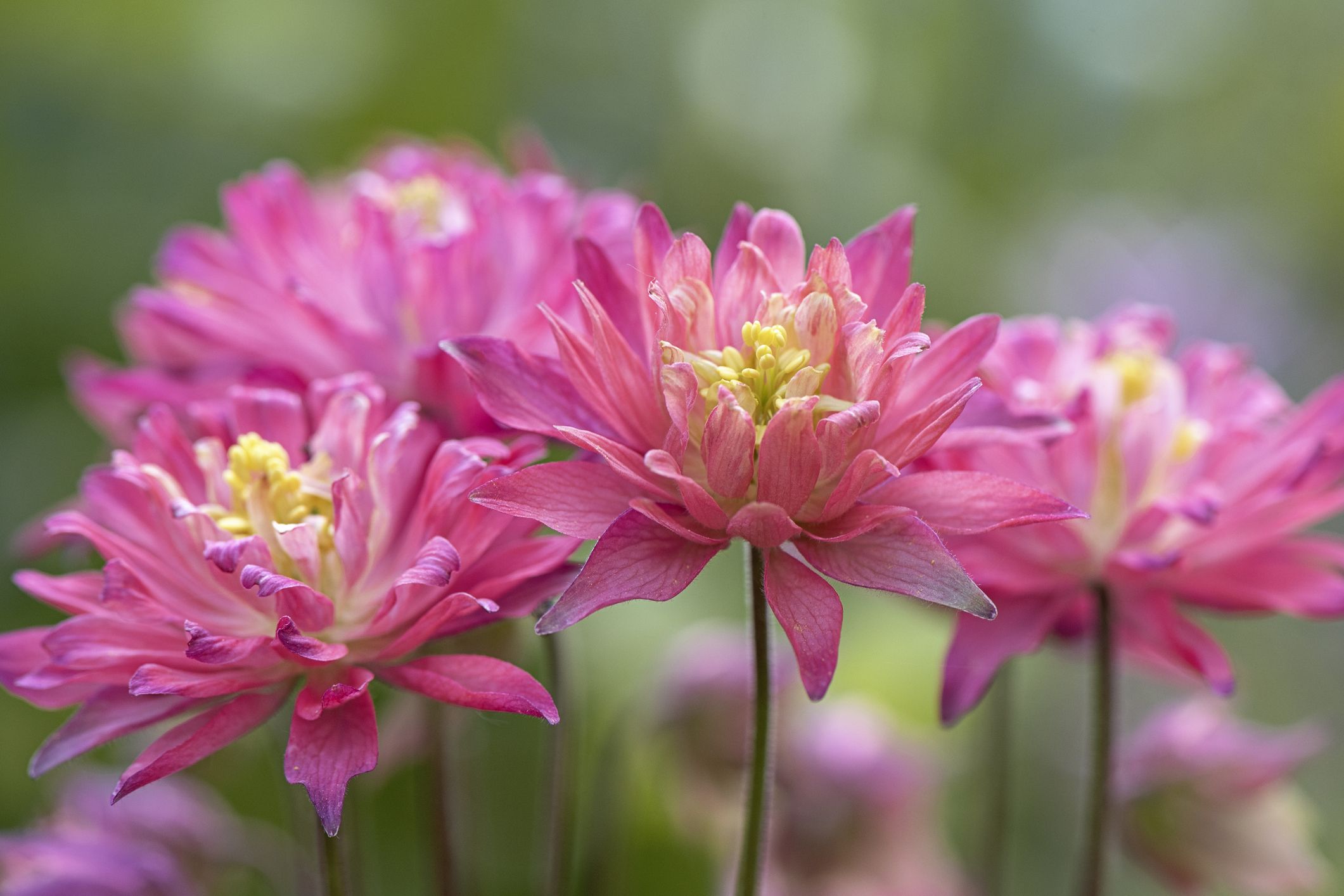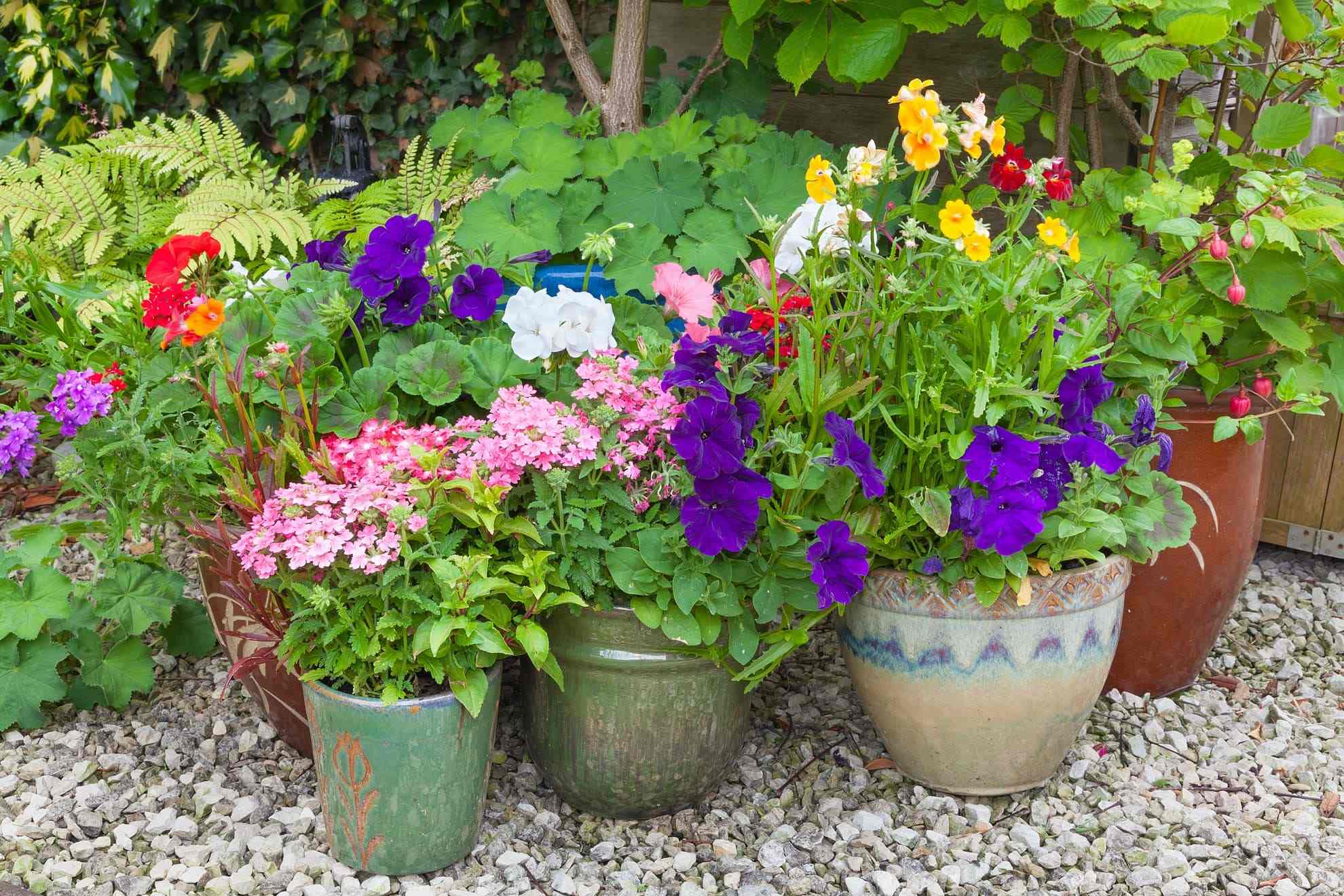Home>Types of Gardening>Ornamental Gardening>Which Daisies Are Perennials
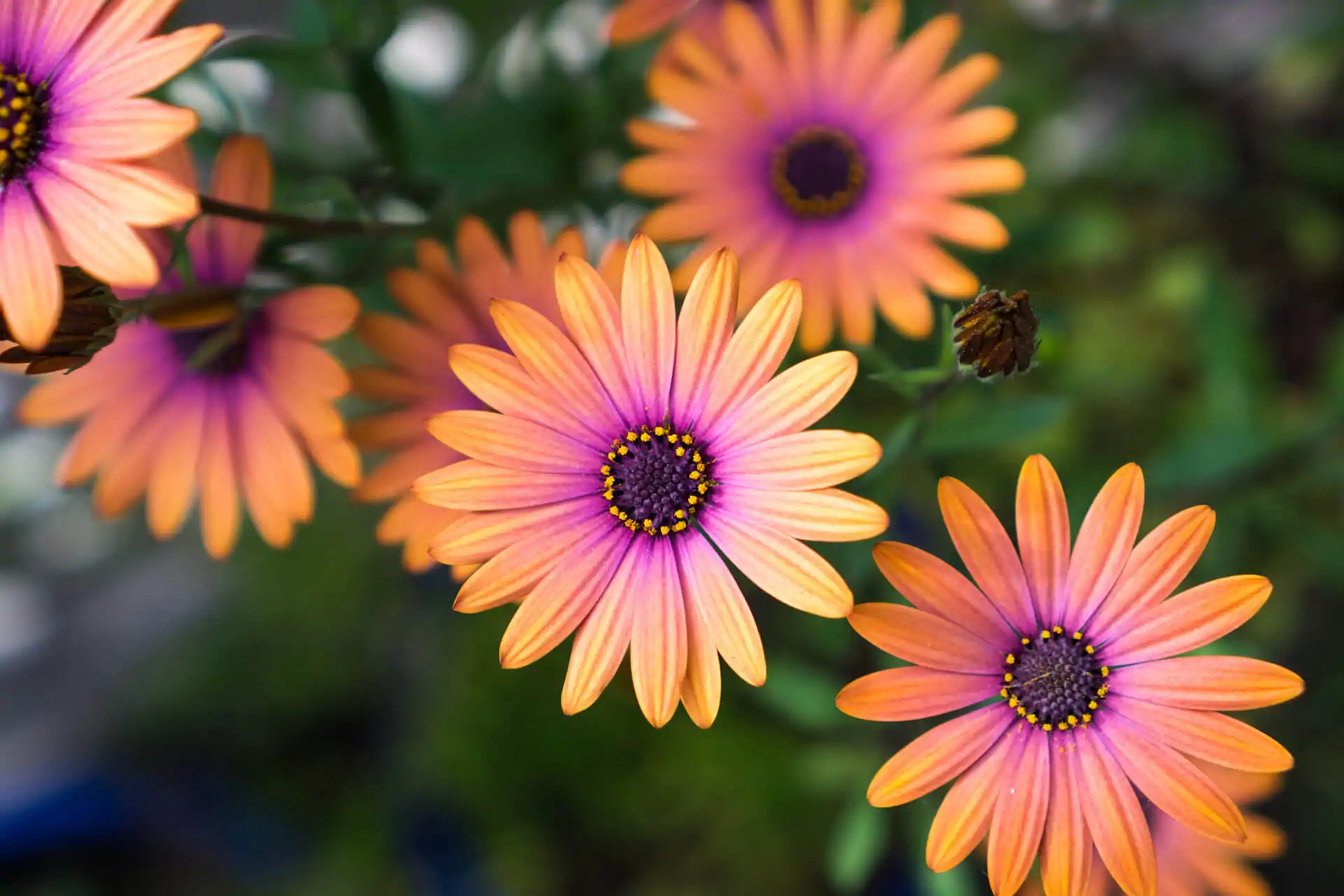

Ornamental Gardening
Which Daisies Are Perennials
Modified: January 22, 2024
Discover the best perennials for your ornamental garden. Learn about the different types of daisies that thrive year after year.
(Many of the links in this article redirect to a specific reviewed product. Your purchase of these products through affiliate links helps to generate commission for Chicagolandgardening.com, at no extra cost. Learn more)
Table of Contents
Introduction
Ornamental gardening is a wonderful way to add beauty and charm to any outdoor space. One popular choice for ornamental gardens is daisies. Known for their vibrant colors and delicate petals, daisies are a favorite among gardeners.
One common question that arises when it comes to cultivating daisies is whether they are perennials or not. Understanding the classification of daisies is crucial for gardeners looking to create a low-maintenance, long-lasting garden. In this article, we will delve into the world of daisies and explore which varieties are considered perennials.
Before we jump into the specifics, let’s first define what perennials are. Perennials are plants that have a lifespan of more than two years. Unlike annuals, which complete their life cycle in a single season, perennials can come back year after year, providing continuous beauty and foliage to your garden.
Now that we have a better understanding of what perennials are, let’s take a closer look at daisies. Daisies are members of the Asteraceae family and are characterized by their classic daisy-like appearance, consisting of a yellow center surrounded by white rays. However, daisies come in various colors, shapes, and sizes, making them a versatile choice for any garden style.
There are several types of daisies, including the famous Shasta daisies, Gerbera daisies, and Oxeye daisies. These varieties can be further classified into annual and perennial types. In this article, our focus will be on perennial daisies, as they are the ones that will come back year after year, bringing joy and beauty to your garden.
Definition of Perennials
Before we delve into the world of perennial daisies, let’s take a moment to understand what perennials are. Perennials are plants that have a lifespan of more than two years. Unlike annuals, which complete their life cycle in a single season, perennials have the ability to regrow year after year from the same root system.
Perennials are known for their longevity and resilience. They have adapted to survive in various climates and can endure harsh winter conditions, unlike their annual counterparts. This means that once planted, perennial plants will continue to grow and bloom for multiple seasons, saving you time and effort in replanting each year.
A key characteristic of perennials is their ability to go through a period of dormancy during the winter months. This allows them to conserve energy and protect themselves from frost and freezing temperatures. Once the warmer weather returns, perennials will emerge from their dormancy and begin to grow anew.
Perennials come in a wide range of shapes, sizes, and colors, making them versatile additions to any garden. From showy flowers to lush foliage, perennial plants provide interest and beauty throughout the year. Additionally, their deep root systems help improve soil structure and prevent erosion, making them beneficial for the overall health of your garden.
It’s important to note that not all perennial plants are created equal. Some perennials may have a shorter lifespan, while others can live for decades. Understanding the specific needs and characteristics of each perennial plant is essential for successful cultivation in your garden.
Now that we have a clear understanding of what perennials are and their distinct qualities, let’s turn our attention to daisies and explore which varieties fall into the category of perennial plants.
Daisies: An Overview
When it comes to ornamental gardening, daisies are a popular choice amongst gardeners. Known for their cheerful appearance and abundant blooms, daisies add a touch of charm and elegance to any garden setting.
Daisies belong to the Asteraceae family, which is one of the largest plant families and includes more than 23,000 species. The name “daisy” is often used to refer to various species within this family, each with its own unique characteristics.
What sets daisies apart is their classic, daisy-like appearance. They typically feature a prominent yellow center, known as the disk floret, surrounded by delicate white petals, known as the ray florets. This iconic look has made daisies a favorite amongst gardeners and floral enthusiasts alike.
However, it is important to note that not all flowers with a daisy-like appearance are true daisies. The term “daisy” is often used loosely to describe any flower that resembles this distinctive form. For example, flowers like chamomile and the Michaelmas daisy are commonly referred to as daisies despite not belonging to the Asteraceae family.
True daisy plants are herbaceous perennials, meaning they have non-woody stems that die back at the end of the growing season. They come in various shapes, sizes, and colors, offering a wide range of options for gardeners to choose from. Daisies can be found in pure white, sunny yellow, soft pink, vibrant red, and even bi-colored or multi-colored combinations.
Due to their versatility and adaptability, daisies can thrive in different environments, from full sun to partial shade. They are relatively low-maintenance plants that attract pollinators such as butterflies and bees, making them beneficial for the overall ecosystem of your garden.
Whether used as border plants, groundcovers, or cut flowers for arrangements, daisies continue to be a beloved choice for ornamental gardens. In the next section, we will explore the different types of daisies and identify which ones are considered perennials.
Types of Daisies
When it comes to daisies, there is a wide variety of species and cultivars to choose from. Each type of daisy has its own unique characteristics and growth habits, offering gardeners a diverse selection of options to suit their preferences and garden conditions.
Here are some of the most popular types of daisies:
- Shasta Daisies (Leucanthemum x superbum): Shasta daisies are perhaps the most well-known variety of daisies. They feature large, white flowers with yellow centers. Shasta daisies are known for their long blooming period and their ability to thrive in a variety of soil types.
- Gerbera Daisies (Gerbera jamesonii): Gerbera daisies are highly sought after for their stunning blooms, which come in a wide array of vibrant colors, including red, pink, orange, and yellow. They are popular as cut flowers and are known for their long vase life.
- Oxeye Daisies (Leucanthemum vulgare): Oxeye daisies are native to Europe but can be found growing in various regions around the world. They have a classic daisy appearance with white petals and yellow centers. Oxeye daisies are adaptable and can grow in a range of soil types.
- African Daisy (Osteospermum): African daisies are known for their eye-catching flowers, which come in shades of purple, pink, orange, and white. They are native to South Africa and are prized for their ability to tolerate heat and drought conditions.
- English Daisy (Bellis perennis): English daisies are small, delicate flowers that come in shades of white, pink, and red. They are often used as groundcovers or in rock gardens and prefer cool climates with moist soil.
These are just a few examples of the many types of daisies available. Each variety has its own unique beauty, growth requirements, and cultural significance. By exploring the different types of daisies, you can find the perfect addition to your garden that suits your personal taste and growing conditions.
Now that we have a better understanding of the different types of daisies, let’s move on to exploring which varieties are considered perennials and will continue to bloom year after year.
Perennial Daisies
Among the various types of daisies, some are classified as perennials, meaning they have the ability to come back year after year. These perennial daisies are a popular choice for gardeners who want long-lasting blooms and a low-maintenance garden.
Perennial daisies offer several advantages over annual varieties. First and foremost, they save you time and effort in replanting each year. Once established, perennial daisies will continue to grow and bloom for multiple seasons, bringing beauty and color to your garden without the need for constant replanting.
In addition to their longevity, perennial daisies also tend to be more resilient and adaptable to different growing conditions. They have deeper root systems, which allow them to withstand drought conditions and better access nutrients and water in the soil. This makes them more able to survive and thrive in challenging environments.
Perennial daisies also provide a sense of stability and consistency to your garden. As they come back year after year, they create a familiar and reliable presence, making your garden feel well-established and cohesive. This is particularly beneficial for those seeking to create a long-term ornamental garden design.
It’s important to note that while perennial daisies have a longer lifespan, they still require care and maintenance to thrive. Regular watering, fertilizing, and deadheading are essential for promoting healthy growth and prolonged blooming. However, compared to annual daisies, the care requirements for perennials are generally less demanding.
In the next section, we will take a closer look at the characteristics of perennial daisies and explore some popular varieties that you can consider adding to your garden.
Characteristics of Perennial Daisies
Perennial daisies, as the name suggests, are daisy plants that have the ability to come back year after year. They offer a range of characteristics that make them a popular choice for gardening enthusiasts. Understanding these characteristics can help you choose the right perennial daisies for your garden and ensure their successful growth.
Here are some key characteristics of perennial daisies:
- Longevity: Perennial daisies have a longer lifespan compared to annual varieties. With the right care and conditions, they can continue to bloom for many years, providing a consistent source of beauty in your garden.
- Hardiness: Perennial daisies are known for their resilience and ability to tolerate different weather conditions. They can withstand colder temperatures, heatwaves, and even drought. This makes them suitable for a wide range of climates.
- Root System: Perennial daisies have deep and extensive root systems, enabling them to access water and nutrients from deeper within the soil. This helps them withstand drought and promotes overall plant health.
- Blooming Period: Perennial daisies generally have a longer blooming period compared to annual varieties. They can produce blooms for several weeks or even months, providing continuous color and beauty in your garden.
- Growth Form: Perennial daisies can vary in size and growth habit. Some may grow in clumps, while others spread through underground rhizomes. The growth form can affect their spread and how they fill out in the garden.
- Foliage: Perennial daisies often have attractive foliage, with leaves that may be green, silver, or variegated. The foliage can add visual interest and texture to the garden even when the plants are not in bloom.
- Flower Colors and Shapes: Perennial daisies come in a variety of colors, including white, yellow, pink, and purple. Some varieties may have double flowers, while others have unique shapes or patterns on their petals.
These characteristics make perennial daisies a versatile and appealing choice for gardeners who want long-lasting, low-maintenance plants. With their ability to endure harsh conditions and their beautiful blooms, perennial daisies can bring color and joy to your garden for years to come.
Next, let’s explore some popular varieties of perennial daisies that you can consider incorporating into your garden.
Benefits of Growing Perennial Daisies
Growing perennial daisies in your garden can bring a multitude of benefits beyond their beautiful blooms and classic daisy charm. These hardy and long-lasting plants offer several advantages that make them a popular choice among gardeners. Let’s explore some of the benefits of growing perennial daisies:
- Low Maintenance: Perennial daisies require minimal care once established. Unlike annuals that need to be replanted every year, perennial daisies come back on their own, saving you time and effort. They are generally more tolerant of environmental stressors and require less watering and fertilizing.
- Longevity: One of the key benefits of perennial daisies is their ability to last for several years. Once planted, they continue to grow and bloom, providing continuous beauty in your garden. Their longevity allows you to create a well-established and cohesive garden design.
- Cost-Effective: Investing in perennial daisies can save you money in the long run. Since they come back year after year, you don’t need to purchase new plants annually. With proper care, they can thrive for many seasons, making them a cost-effective choice for gardeners.
- Ecosystem Support: Perennial daisies, like other flowering plants, attract pollinators such as bees and butterflies. These insects play a crucial role in pollination and contribute to the overall health and biodiversity of your garden. By growing perennial daisies, you provide a habitat and food source for these beneficial creatures.
- Adaptability: Perennial daisies are known for their adaptability to different growing conditions. They can tolerate varying levels of sunlight, soil types, and climates. This versatility makes them suitable for a wide range of garden settings, from sunny borders to shaded corners.
- Visual Appeal: With their vibrant colors, charming petals, and attractive foliage, perennial daisies add visual appeal and beauty to any garden. Whether as border plants, focal points, or accents in flower beds, their blooms can create a striking display and enhance the overall aesthetics of your outdoor space.
These benefits make growing perennial daisies a rewarding experience for both beginner and experienced gardeners. Their low maintenance requirements, longevity, and ability to support pollinators make them a sustainable and eco-friendly choice for ornamental gardens.
Now that we’ve explored the benefits, let’s discover some popular varieties of perennial daisies that you can consider incorporating into your own garden.
Popular Varieties of Perennial Daisies
When it comes to selecting perennial daisies for your garden, you have a wide variety of popular choices to consider. These perennial daisies come in different colors, shapes, and sizes, allowing you to create a garden filled with delightful blooms. Let’s explore some of the popular varieties of perennial daisies:
- Shasta Daisies (Leucanthemum x superbum): Shasta daisies are classic favorites, known for their large white flowers with sunny yellow centers. They are easy to grow, long-lived, and have a prolonged blooming period. Some popular cultivars include ‘Becky’, ‘Snow Lady’, and ‘Crazy Daisy’.
- Black-Eyed Susans (Rudbeckia): Black-eyed Susans are stunning perennial daisies that add a vibrant splash of color to the garden. They have bright yellow or orange petals with a dark brown or black center. Varieties like ‘Goldsturm’ and ‘Indian Summer’ are cherished for their reliability and extended bloom time.
- Gerbera Daisies (Gerbera jamesonii): Gerbera daisies are known for their large, colorful flowers that come in a range of shades, including red, pink, orange, and yellow. They are popular for their long vase life and are a favorite choice for cut flower arrangements. Varieties like ‘Wow’ and ‘Sahara’ are beloved for their stunning blooms.
- Oxeye Daisies (Leucanthemum vulgare): Oxeye daisies are native to Europe and have a classic daisy appearance with white petals and yellow centers. They are adaptable and can grow in a variety of soil types. Varieties like ‘Maikonigin’ and ‘Alaska’ are cherished for their purity and beauty.
- Coreopsis (Coreopsis spp.): Coreopsis, also known as tickseed, is a sun-loving perennial with bright, daisy-like flowers in shades of yellow, pink, or red. They have a long bloom season and are loved for their ability to attract butterflies. Varieties like ‘Moonbeam’ and ‘Zagreb’ are popular for their compact size and prolific flowering.
- Blanket Flowers (Gaillardia): Blanket flowers are native to North America and are known for their vibrant red and yellow flowers. They are drought-tolerant and attract a variety of pollinators to the garden. Popular varieties include ‘Arizona Sun’ and ‘Goblin’.
These are just a few of the many popular varieties of perennial daisies available. Each variety brings its own unique charm and attributes to the garden, allowing you to create a visually stunning and diverse display of daisy blooms.
Consider the growing conditions in your garden, such as sunlight exposure and soil type, when selecting which daisy varieties to include. By choosing a combination of these popular varieties, you can create a dynamic and colorful garden that will bring joy and beauty year after year.
Now that we’ve explored some popular perennial daisy varieties, let’s delve into how to plant and care for these lovely flowers to ensure their healthy growth and abundant blooms.
How to Plant and Care for Perennial Daisies
Planting and caring for perennial daisies is relatively straightforward, making them a great choice for both beginner and experienced gardeners. By following a few simple steps, you can ensure the healthy growth and long-lasting blooms of these delightful flowers. Here’s a guide on how to plant and care for perennial daisies:
- Choose the Right Location: Select a sunny location in your garden for planting perennial daisies. They thrive in full sun, although some varieties can tolerate partial shade. Ensure the soil is well-draining to prevent waterlogged roots.
- Prepare the Soil: Before planting, prepare the soil by removing any weeds, rocks, or debris. Loosen the soil to improve drainage and mix in organic matter, such as compost or well-rotted manure, to enrich the soil and promote healthy growth.
- Planting: Dig a hole that is slightly larger than the root ball of the plant. Place the perennial daisy in the hole, making sure the crown—the area where the stems meet the roots—is level with or slightly above the soil surface. Backfill the hole with soil, gently firming it around the plant.
- Watering: After planting, water the daisy thoroughly to settle the soil around the roots. Water regularly, especially during dry spells, to keep the soil consistently moist but not waterlogged. Avoid overwatering, as it can lead to root rot.
- Mulching: Apply a layer of organic mulch, such as shredded bark or compost, around the base of the plant. Mulching helps conserve moisture, suppress weeds, and regulate soil temperature. Leave a small gap around the stem to prevent rot.
- Deadheading: Deadheading, or removing faded blooms, helps prolong the blooming period of perennial daisies. Pinch or snip off spent flowers just above a set of healthy leaves or buds. This promotes continued flowering and a tidier appearance.
- Fertilizing: Perennial daisies generally do not require heavy fertilization. However, applying a balanced slow-release fertilizer in early spring can provide the necessary nutrients for healthy growth and abundant blooms. Follow the manufacturer’s instructions for dosage.
- Dividing: Over time, perennial daisies can become overcrowded and produce fewer blooms. To maintain their vigor, divide them every few years in early spring or fall. Dig up the clump, separate it into smaller sections, and replant them in fresh, prepared soil.
- Pest and Disease Control: Perennial daisies are relatively resistant to pests and diseases. However, keep an eye out for common issues like aphids, slugs, or powdery mildew. Treat infestations promptly with organic insecticides or fungicides, or use natural pest control methods.
By following these planting and care tips, you can ensure the health and longevity of your perennial daisies. With proper care, they will reward you with continuous blooms and a vibrant addition to your garden for years to come.
Now that you know how to plant and care for perennial daisies, let’s address some of the common issues and pests that you may encounter while growing these lovely flowers.
Common Issues and Pests for Perennial Daisies
While perennial daisies are generally resilient and low-maintenance plants, they can still be susceptible to certain issues and pests. Being aware of these common problems and knowing how to address them can help ensure the health and vitality of your daisies. Here are some common issues and pests you may encounter when growing perennial daisies:
- Aphids: Aphids are small, sap-sucking insects that can infest the foliage of your daisies. They can cause stunted growth, distortion of leaves, and the presence of sticky honeydew. Control aphid populations by spraying the affected plants with a solution of water and insecticidal soap, or by introducing natural predators like ladybugs.
- Slugs and Snails: Slugs and snails are commonly found pests in damp garden environments. They can chew on the leaves and flowers of your daisies, leading to unsightly damage. Protect your plants by using organic slug and snail baits, creating barriers like copper wire or eggshells, or manually removing these pests from the garden.
- Powdery Mildew: Powdery mildew is a fungal disease that appears as a white, powdery coating on the leaves of daisies. It can cause leaf distortion and reduce the vigor and blooming of the plant. Prevent powdery mildew by providing good air circulation and avoiding overhead watering. If detected, treat the affected plants with a fungicidal spray recommended for powdery mildew.
- Root Rot: Overwatering or poorly draining soil can lead to root rot in perennial daisies. This can cause wilting, yellowing of leaves, and ultimately death of the plant. To prevent root rot, make sure to plant your daisies in well-draining soil and avoid excessive watering. If root rot occurs, remove the affected plant, improve the soil drainage, and replant with a healthy specimen.
- Deer and Rabbits: Deer and rabbits can be a nuisance in gardens, feeding on the foliage and flowers of daisies. Use physical barriers like fences or netting to deter these animals, or spray repellents that are specifically designed for deer and rabbits. Additionally, planting deer-resistant plants alongside your daisies can help reduce the damage caused by these foraging creatures.
- Weeds: Weeds can compete with perennial daisies for nutrients, water, and sunlight. Regular weeding around your daisies can help prevent weed growth and maintain a clean garden bed. Apply mulch to suppress weed growth and consider using an organic weed control method if necessary.
By closely monitoring your perennial daisies and taking proactive measures to address these common issues and pests, you can maintain the health and beauty of your plants. Remember to promptly detect and treat any problems to prevent them from spreading and causing further damage.
Now that we have discussed common issues and pests, let’s wrap up this article by summarizing the key points and reiterating the beauty and benefits of growing perennial daisies in your garden.
Conclusion
Perennial daisies are a wonderful addition to any ornamental garden, providing beauty, charm, and long-lasting blooms. With their resilience, low-maintenance nature, and a wide variety of species to choose from, perennial daisies are a favorite among gardeners of all skill levels.
From the classic Shasta daisies to the vibrant Gerbera daisies, there’s a perennial daisy variety to suit every garden preference. These hardy plants offer numerous benefits, including low maintenance requirements, long blooming periods, and their ability to attract pollinators. Their adaptability to various growing conditions and their visual appeal make them a valuable addition to any garden design.
When planting perennial daisies, providing them with a well-draining sunny spot, preparing the soil with organic matter, and watering them appropriately will help ensure their healthy growth. Regular care practices such as deadheading spent blooms, fertilizing sparingly, and dividing plants as needed can further promote their longevity and vitality.
While perennial daisies are generally hardy, it’s important to be aware of common issues and pests like aphids, powdery mildew, and slugs. By promptly addressing these problems using organic control methods, you can help maintain the overall health of your daisies.
Adding perennial daisies to your garden not only brings beautiful blooms year after year but also creates a welcoming habitat for pollinators and contributes to the biodiversity of your outdoor space. Their longevity and low maintenance requirements make them a cost-effective and sustainable choice for gardeners.
So, whether you’re looking to create a vibrant border, a colorful flower bed, or a charming cottage-style garden, consider planting perennial daisies. With their enduring beauty and delightful presence, these daisies will continue to inspire and bring joy to your garden for seasons to come.


